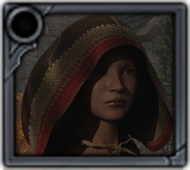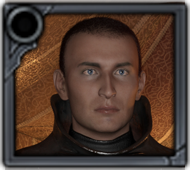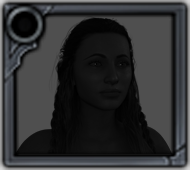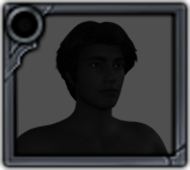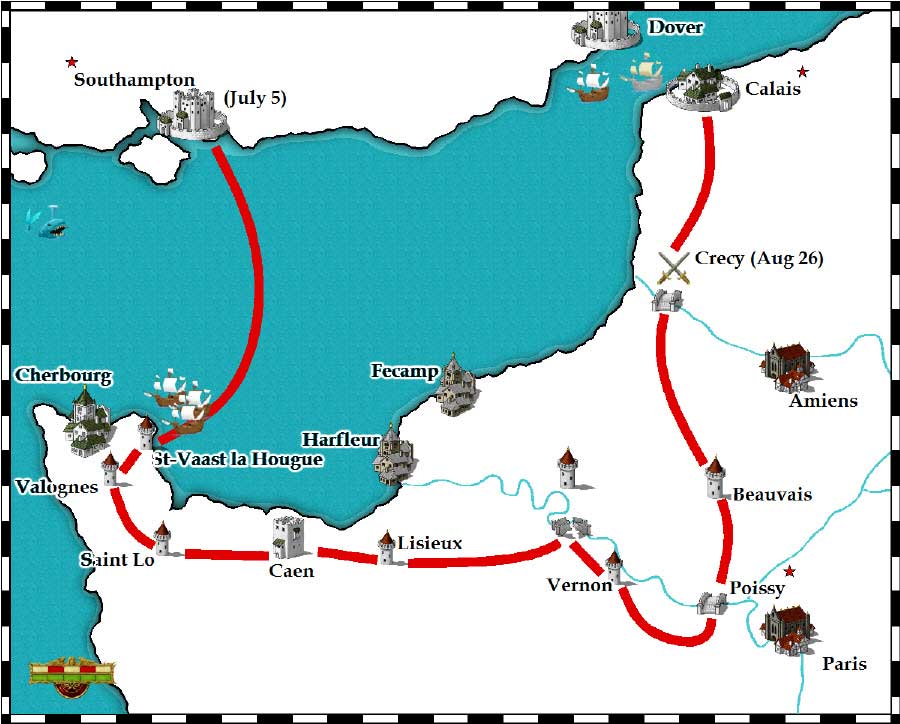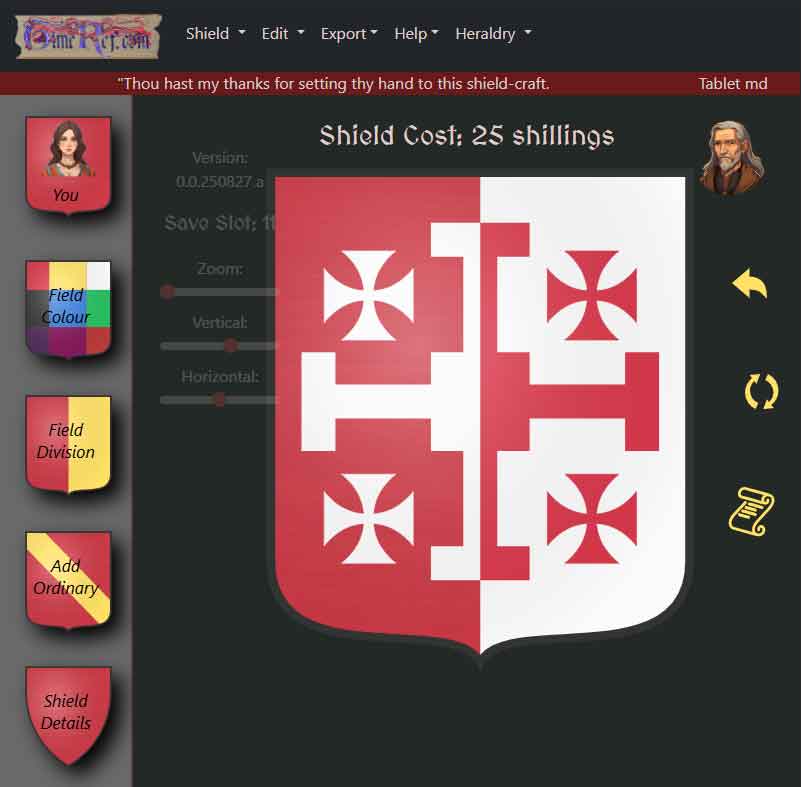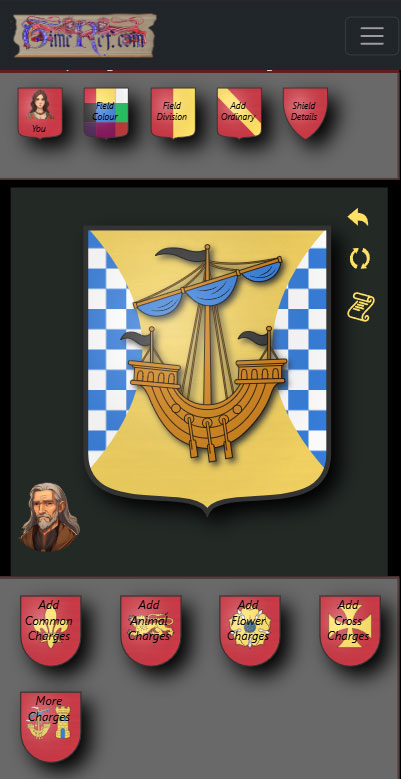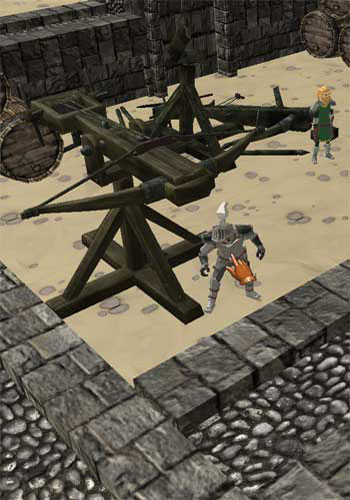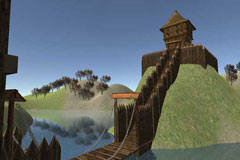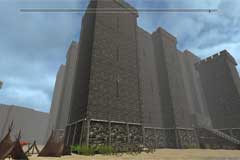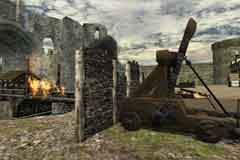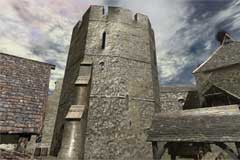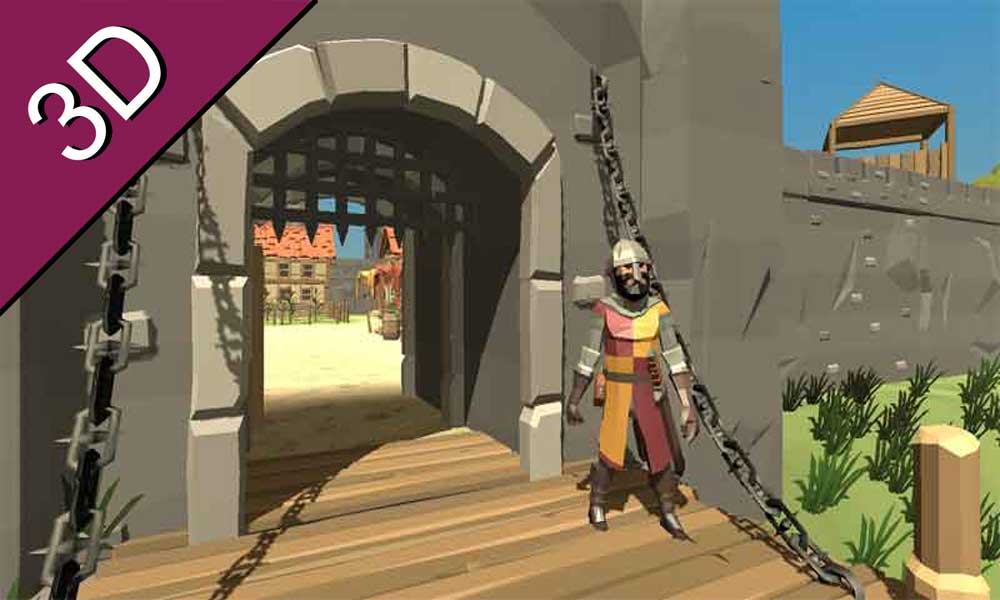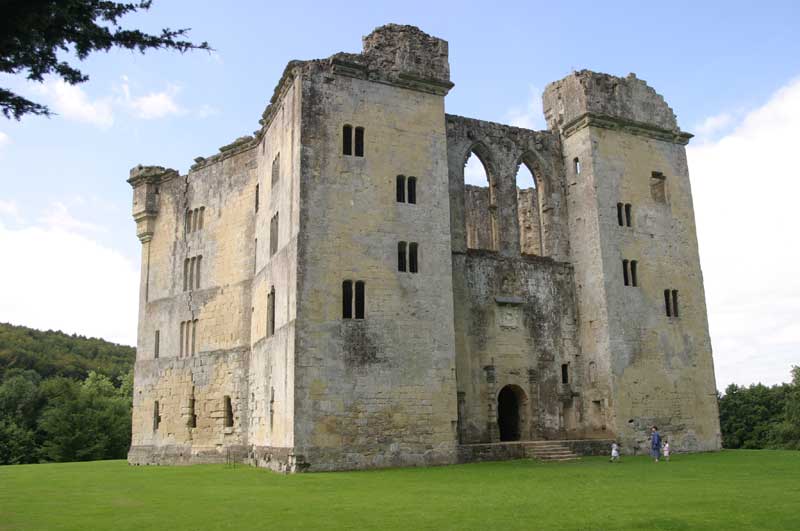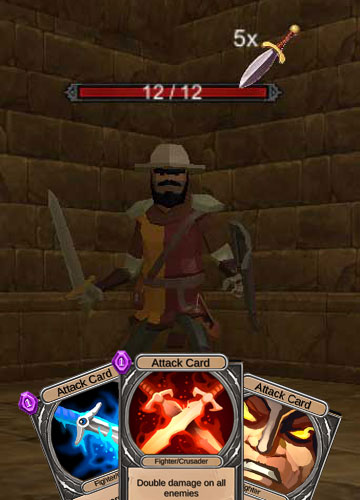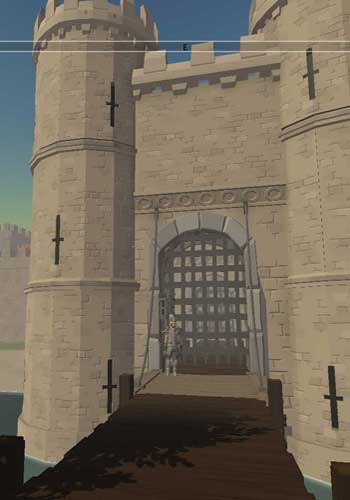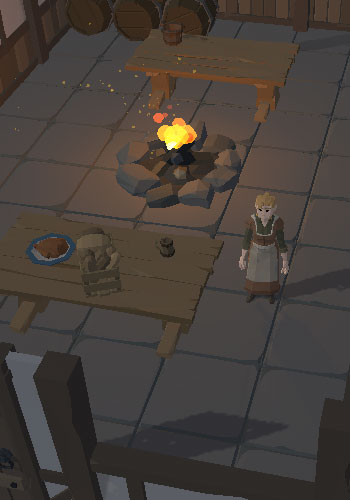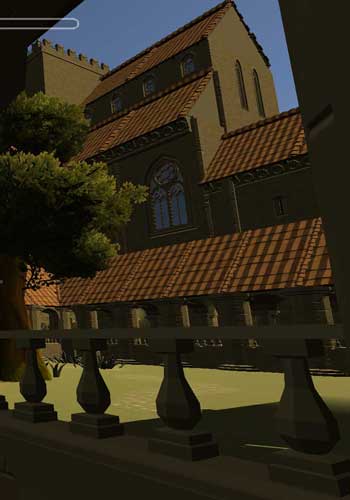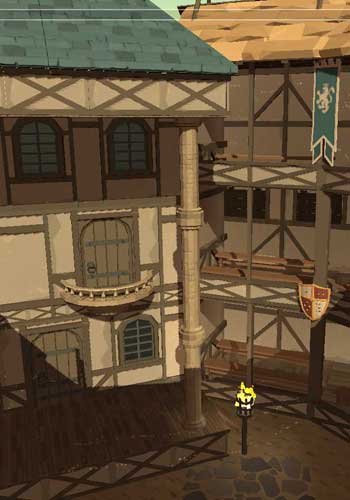 fter the poor reign of his father King Edward III's reign lasted fifty years and restored the confidence of the English nation as a whole in the monarchy. Edward was declared Keeper of the Realm in 1326 when his father abdicated. The abdication was forced on the old king by Queen Isabella and her lover Roger Mortimer. Isabella had held Edward in France in 1325 when he had travelled there to pay homage to Charles IV, the King of France. When Isabella, Mortimer and Edward landed in England Edward II fled to Wales. The King was captured and later murdered, by Mortimer's order, in September of 1327. King Edward III was crowned at Westminster Abbey early in 1327 but was only fourteen years old and too young to rule unaided. The country was run by a regency led by Henry of Lancaster. Although still in his youth the young king led an army to intercept the Scots who had invaded the north of England in the same year. Edward failed to find the Scottish and had to retreat but the next year he signed the treaty of Northampton which agreed that Scotland should be independent and Robert the Bruce should be King. To strengthen the ties between England and Scotland Edward's sister Joan was married to the David (II) of Scotland, the young son of Robert the Bruce. Edward himself married Philippa of Hainault in early 1328.
fter the poor reign of his father King Edward III's reign lasted fifty years and restored the confidence of the English nation as a whole in the monarchy. Edward was declared Keeper of the Realm in 1326 when his father abdicated. The abdication was forced on the old king by Queen Isabella and her lover Roger Mortimer. Isabella had held Edward in France in 1325 when he had travelled there to pay homage to Charles IV, the King of France. When Isabella, Mortimer and Edward landed in England Edward II fled to Wales. The King was captured and later murdered, by Mortimer's order, in September of 1327. King Edward III was crowned at Westminster Abbey early in 1327 but was only fourteen years old and too young to rule unaided. The country was run by a regency led by Henry of Lancaster. Although still in his youth the young king led an army to intercept the Scots who had invaded the north of England in the same year. Edward failed to find the Scottish and had to retreat but the next year he signed the treaty of Northampton which agreed that Scotland should be independent and Robert the Bruce should be King. To strengthen the ties between England and Scotland Edward's sister Joan was married to the David (II) of Scotland, the young son of Robert the Bruce. Edward himself married Philippa of Hainault in early 1328. Claim to the French throne
In February of 1328 Charles IV, the king of France, died. He died without a male heir and there was confusion as to who should become the next king. Edward's mother was Charles' sister and this meant that Edward was the nephew of the old French king and a strong contender to the French throne. Unfortunately the French system did not allow the line of succession to pass via a female member of the family and so Philippe of Valois, Charles' cousin, was chosen instead. Edward accepted this but would later contest the decision and fight for the French throne.The end of Mortimer
Edward had probably not forgotten or forgiven Mortimer for the murder of his father, Edward II. In 1330 Mortimer arrested and executed Edmund the Earl of Kent a supporter of Edward and son of Edward I. This appears to be the final straw for now that Edward was eighteen and old enough to rule unaided he arrested Mortimer at Nottingham Castle and after he was tried by Parliament Mortimer was executed. Even though Isabella played a big part in the overthrowing of Edward II she was allowed to retire to Castle Rising in Norfolk.Scotland and Balliol
At the battle of Dupplin Moor in 1332 Edward Balliol overthrew David II, King of Scotland. Balliol had a claim to the Scottish throne and the King of England supported that claim. In the same year David fought back and in turn overthrew Balliol. In 1333 at the battle of Halidon Hill Edward III defeated David's army and Balliol was put back on the Scottish throne. Balliol's reign was never secure and when he was overthrown again in 1336, David II became King of the Scots and remained so until 1337.The Hundred Years War
In October 1337 Edward resumed his claim to the French throne starting over a hundred years of conflict with France. Edward invaded France in 1338 but the help he was expecting from the Count of Hainault did not materialise. The English had some success when they won a major sea battle against the French in June 1340 off the French coast near Sluys. Three quarters of the French fleet of almost 200 ships were destroyed and thousands of lives were lost. In France the French king Philippe refused to fight. Edward even challenged him to a one-to-one fight. Little could be gained and so at the end of 1340 Edward returned to England. The next few years saw little change. Edward tried to make gains in France but failed and due to harsh weather and a shortage of funds signed a new peace treaty and returned to England. In the summer of 1346 Edward amassed an invasion army at Portsmouth and invaded Normandy. The English and French armies met at Crecy where 12,000 English faced a force of 36,000 French. The French archers were no match for the English longbows and the French were slaughtered. Large numbers of French nobility were captured or killed. Back in Britain the Scots under David II invaded northern England. An English army, led by the Archbishop of York, fought and defeated the Scots at Neville's Cross where David II was captured. In France Edward had captured the important town of Calais and signed a peace treaty before returning home.Order of the Garter
At Windsor Castle on June 23 of 1348 a series of tournaments were held and Edward created the Order of the Garter. Several important knights and members of the royal family were given membership to the order which was based on the legend of King Arthur and the Round Table.Black Death
In the summer of 1348 the Black Death or Bubonic Plague reached the south of England and by the summer of the next year the outbreak was at its peak. Some estimates put the death toll at a third of the country's population but determining an accurate number is difficult.Final Years
A family tree showing King Edward III's complex family tree including the Lancastrian and Yorkist branches that would fight each other in the battles of the Wars of the Roses.

